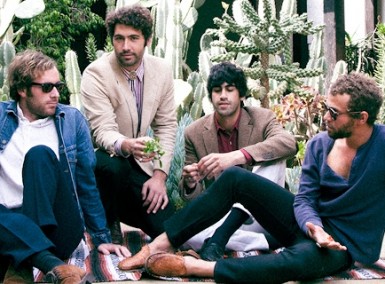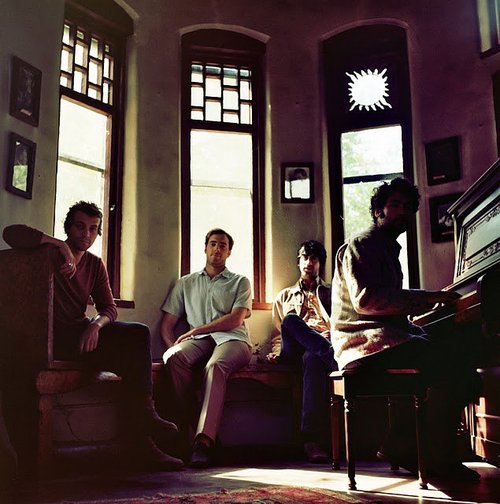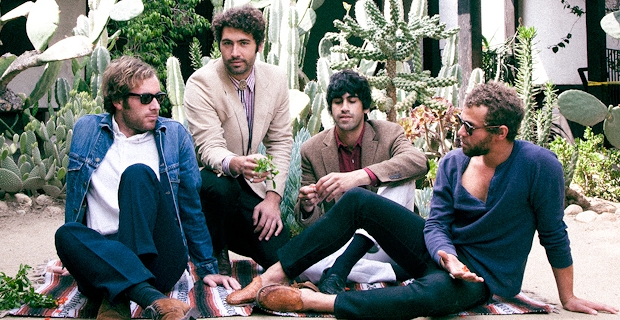 ALLAH-LAS are a beautifully sand-sculpted gem, buffed and burnished on the sonic shores of California. While the group found its roots in 2008, its members had been intertangled for a number of years previous; three went to highschool together, and at the time of the band’s inception most of them (percussist Matt Correia, bassist Spencer Dunham and lead guitarist Pedrum Siadatian) were also working at the famous Amoeba Records on Los Angeles’ Sunset Boulevard. Their self-titled debut was released in 2012 to exceptionally warm praise, solidifying itself as a treasure on the lo-fi horizon.
ALLAH-LAS are a beautifully sand-sculpted gem, buffed and burnished on the sonic shores of California. While the group found its roots in 2008, its members had been intertangled for a number of years previous; three went to highschool together, and at the time of the band’s inception most of them (percussist Matt Correia, bassist Spencer Dunham and lead guitarist Pedrum Siadatian) were also working at the famous Amoeba Records on Los Angeles’ Sunset Boulevard. Their self-titled debut was released in 2012 to exceptionally warm praise, solidifying itself as a treasure on the lo-fi horizon.
What sets ALLAH-LAS apart on the incoming roll of the modern psych wave is their intricacy; an intelligent delicacy informed by a holistic artistic appreciation and a thirst for the beauty of the physical world. Worship The Sun (released on Innovative Leisure in September) is a stunning record that traverses the halls of psychedelia, country and beach-swept garage-pop; it drips with sunshine, but also hints at the vague melancholy of a late summer evening, leaving the soft taste of salt spray on the lips.
I sat down with vocalist and guitarist Miles Michaud before their sold-out show in Berlin – I also asked him to perform some linear acrobatics for me, drawing a portrait of the band with a bundle of coloured pens. What ensued was an engaging chat about life in LA, desert expeditions in search of whale sharks and, of course, the creation of the second record.
In a lot of ways your music seems inextricably tied to place; especially the sun and the beach. I read that you all surf?
Yeah, all of us except for Pedrum do.
So how would you describe your connection to place, in terms of its power as a creative influence for the band?
I think that wherever you’re from, wherever you grew up, whatever your environment is, there’s gonna be some elements of that that get translated into anything that you create or any expression that you make. For us, that’s Los Angeles. Three of us grew up there, by the beach. It’s not so much a conscious effort to have the sounds of Los Angeles in our music, but it’s something that naturally happens. I think other people hear it a lot more readily than we do, because to us it’s just the sound we make, it’s ingrained in us. [looks at drawing] This is off to a good start!
How would you describe LA to somebody that’s never been there?
It’s massive. And mercurial, and strange, and beautiful and inspiring and deafening. There are a lot of different elements about it. It’s hard to ‘get into’. When people visit, oftentimes they don’t really know what to do. It’s hard to figure out what about the city you’re gonna like. It’s like any city, really. You show up and it’s like: ‘Here’s a list of things you’ve got to do in LA’. Go to Hollywood Boulevard, go to Disneyland, and then you’re just driving around the whole time and you’re on the freeway and it just kinda sucks.
It also begs the question, how many people who actually live there go and do those things? Like go to Disneyland.
Well, the people that live near Disneyland are kinda all Disneyland fanatics. It’s kind of bizarre. In the city of Anaheim, you kind of have to have some respect for it – it’s like it’s a football team or something, you know [laughs]. The people of Anaheim all kinda like Disneyland. Anyway. That has nothing to do with anything. And I hope they never hear that. I’m not so good at eyes, but here we go [drawing]…
What does your life in LA look like when you aren’t touring and recording?
Um… I don’t even remember. Because that’s all we’ve been doing, for the last two and a half years. But you know, we try to get to the beach as much as possible, hang out, go to shows, look for records, try to spend a lot of time outdoors. One of my favourite things about Los Angeles is how easy it is to get out of the city. It’s a bowl that’s surrounded by these wild places. Within two hours you can be in the desert, you can be on the beach, you can be in the mountains, you can be in the snow, you can be anywhere. Or you could be just in the middle of nowhere, with nobody else around you.
I guess I never really think of that when I think of LA.
No, but it’s in the middle of the desert! It’s a city that’s just popped up in the middle of the desert and it’s surrounded by a mountain range, and that’s partially why the smog is so bad. But it isn’t that bad anymore. You can put that on the recording. ‘It’s not so bad!’ [laughs]
In terms of the new album, my first impression was that it seemed a lot more diverse. It’s a bit country in parts, and then ‘Recurring’ has this BEACH BOYS singalong thing going on. Would you agree? Was this due to a change in your creative process?
For the first record, all of those songs came about from us basically jamming together. We would work out every song through playing it live, and we would figure out how it was going to be laid out through our live set. Since that was the formula for all the songs, they kinda had that consistency to them. For this record, since it was more of an abstraction, or songs that had been written but never performed live, when we got into the studio we were able to kind of play with them more. So it was a different approach, and one that we really enjoyed, because one of our favourite things to do is record and be in the studio. It was just a different way of doing things and it had a different yield. It’s funny, because even the smallest, tiniest elements that go into a recording will change the feel and outcome of it.
In a recent interview I read, you were talking about musical influences and named a pretty diverse list. I remember it containing THE CLEAN, BEAT HAPPENING, SPACEMEN 3, JESUS AND THE MARY CHAIN… Was there anything in particular you can remember listening to while recording?
We were really into THE PRETTY THINGS, a record called Philippe DeBarge. There was this French aristocrat that wanted to make a record, and he wanted THE PRETTY THINGS to make it with him. So they went to his chateau and met up, and I don’t know what they did, drank wine I suppose. But they said okay, we’ll make this album with you, but we have to be in charge of all the recording. So they did it, and it ended up being really cool. The production on it is really interesting; a lot of acoustic guitars, a lot of interesting drumbeats. We stumbled upon it on a previous tour and had been listening to it almost constantly. We would play it every night before we went on stage. We never said, you know, ‘Let’s make a record like this’, but I think those elements are always in your head. That’s just how memory works, I guess.
I’ve been listening to Reverberation Radio for a few years now, but it was only recently that I noticed that you guys were linking to it on your website and so forth. What’s the connection there? Do you one of you guys put it together?
Oh, awesome! Well, the four of us do. There’s a little bit of a story here.
Cool! I’m really interested. I’ve always wondered who’s behind it. There are so many great songs in those mixes, especially Eastern music and demos, that I can’t seem to find anywhere else.
Well, I’m sorry you can’t find them. In college I had a radio show on the student radio, KXLU 88.9 in Los Angeles, and as I started working more and getting busy everybody would come through and help out. I mean, everybody as in the band and our friends, not just anybody [laughs]. We’d bring records and hang out and some days I wouldn’t even be there, and they would do the show. Eventually, the administration caught on that I wasn’t there all the time, and that we were playing a lot of old music, and they said ‘don’t play so much old music.’ The administration, by the way, was like two nineteen year old girls. So they didn’t necessarily get what we were doing. We had our fan base but I guess not enough to keep it going, so they eventually kicked us off.
A few months later our good friend Robbie came up with the idea of making Reverberation Radio into a podcast. Now it’s the four of us, our friend Robbie, who is our manager, our friend Jeff, Nick Waterhouse, Robbie Simon (who does a lot of our artwork), and our two close friends Scott and Wesley. It’s basically made up of the people who we shared music with for years, and every week is one person’s job to create the mix for that week. So every two and a half months or so, you’re accountable for a mix. Oh, this is terrible. I just really fucked it up [laughs at drawing].
It’s a little bit glam with the lipstick, but that’s okay.
Yeah, a little bit… I wish it wasn’t so pink. Anyway.
Back to ‘Worship The Sun’ – there’s always so much hype in the media about making a second album. But how did the actual experience compare?
Everybody asks this; like wow, second album huh guys? That must have been tough. But you know, we didn’t really feel pressured about it, because I think people tend to overthink making music or making a record. I think that’s been one of our strong points, that we’re basically driven by what we like in other music. if you don’t think about it too much you can allow your tastes to define for you what is good about what you make and what is bad, and if you just make stuff that you like… I don’t know, how can somebody else not like it? [laughs]. It might seem oversimplified, but I think that’s really the only guiding light we’ve had with this band: does it sound good? No, then don’t do it. Does it sound good? Yeah, well then here we go. We’ll put it on the tape.
I sometimes wonder why there’s such a stigma attached… It feels absurd in some ways. I guess it depends what you’re trying to achieve.
I think so. And yeah, it does. But I think we experienced this, too. We’d been a band for four years before we made a record, and you have basically all that time to make songs. We probably had fifty songs that we had written and played live and dropped off, by the time we went to make the record. So you’re basically making a ‘Greatest hits’ of the first four years of your existence. Then, if it’s a success, you go out and you tour and you’re busy. A year and a half later the record label’s like ‘Right! Where’s that second album?’ It can be intimidating for people, I can understand that. But we never expected to have any success with the first record. We never expected to even make a record. It’s just something that happened over time. So we just figured that, if that’s what worked the first time, then we were gonna go with it again. We just let our own tastes guide us.
I also wanted to ask about the visual element of the band. For example, your videos. ‘Follow You Down’ is a gorgeous video. Where did you shoot it?
We went down to Mexico with a good friend of ours. It was insane; we went on this trip all the way down to the Sea of Cortez. I don’t know how much you know about Mexican geography, but you know the Baja pensinsula?
Hmm…
Okay, so [begins to draw]. Here you have California. Then you have Mexico down here, there’s kind of this peninsula that goes all the way down… It comes around, then you’ve got mainland Mexico. This is the Sea of Cortez. I’ll label that for you. So we came down from LA, then we kinda crossed over to the Sea of Cortez. They have these giant whale sharks there. We went in pursuit of the whale sharks, really. On the way we made a couple of videos, and wanted that one to be a bit of a kitschy, spaghetti western style.
And did you catch a few whale sharks? I mean, did you see some? Not physically catch them.
Yeah, we hauled ’em in! Harpooned them! Sliced them up on the ship! Made candles out of them… [laughs].
That would have been such a horrible question!
But yeah, we did see a bunch of them. We swam with them, held onto them and they pulled us along. So we did that, and shot videos along the way. It was great; it was a joy, an amazing trip. That was like two weeks. There’s going to be other videos coming out from that time, but that’s the first one. It was on these dunes, right on the beach. It’s just barren down there. It was really strange, because it was a really remote area and here’s ten gringos, in these two big vans with really shitty camera equipment. Everybody was really confused; all the local kids, for example. It was a pretty interesting time.
Also, on your website and social media you post a lot of interesting images from other visual artists. One that I liked recently was by a Dutch performance artist, Bas Jan Ader. I don’t know if you saw it, but it’s him riding his bicycle into the canal in Amsterdam. I ended up looking him up; he has a really interesting backstory, and connection to the ocean. He decided that he was going to cross the Atlantic, setting the record for crossing it in the smallest sailboat. I think it was 13 feet, this little boat. He had a choir singing sea shanties on one side as he set off, and he was going to have a choir singing when he arrived on the other side, in Ireland.
Oh, my gosh. Really? No way!
But he never made it – his boat washed up just off the Irish coast, five months later.
Wow, I didn’t know that. That’s very interesting. Matt does a lot of the social media stuff; he curates the Tumblr, and those kind of things. But I think that, if you’re a musician, you shouldn’t just listen to music and care about music. I think it’s important to draw inspiration from all arts. I’m a big fan of literature, myself. The Sea of Cortez trip came from the John Steinbeck book The Sea of Cortez. I said we’ve gotta get down there, we’ve got to do this trip.
Actually, I wanted to ask about your influences outside of music. Where else would you say you guys find a lot of inspiration?
Definitely literature. Definitely film. Spencer, in London, bought this Werner Herzog collection and we’ve been watching all of those, the special features and things.
I guess you get a lot of time to do that on the road..
Not as much as we would like. It would be cool if we had a DVD player in the van… This is the worst drawing. They just get worse and worse.
Who did you start with? Did you start with yourself?
No. I haven’t drawn myself.
So you’re the last one, the worst one; I guess that’s okay then.
Yes. Art, film… Whenever we can, we tend to go to art museums in whatever city we’re in. And there are great art museums in Los Angeles. LACMA always has amazing exhibitions. Huntington is a great museum, it’s in Pasadena. It’s important to be interested in or follow many different types of each artistic endeavour, whether it be music or what. All art is really an insight into somebody else’s mind. The more minds you have insight into, the more… happy you can be, the more you can understand people and be empathetic and be self-satisfied and aware of yourself. It’s important to do… all that stuff [laughs].
The final question relates to our name, seeing as we’re called NOTHING BUT HOPE AND PASSION. What are three things that you still hope to do before the year is finished?
Make it back home alive. It’s tough, because really, after this tour, we have two or three days off and then we go on tour for five weeks in the United States, and then the year’s over, so… Not get too sick? I guess what I would like to accomplish is have a successful tour, both here and back in the States, and also be able to have all my affairs in line for the holidays. I don’t want to be rushing around, trying to get gifts for people when I get home. Wow, this is really boring [laughs]. I also can’t wait to swim in the Mediterranean Sea. I’m looking forward to that very much. And we’re going to Tel Aviv, which is going to be very interesting for us. Can you squeeze three out of that?
—
